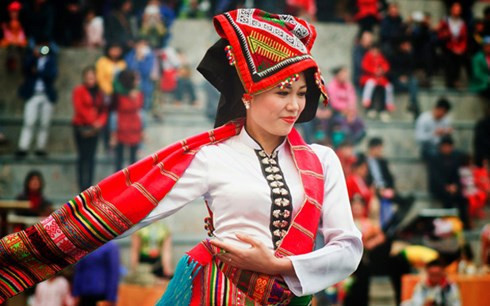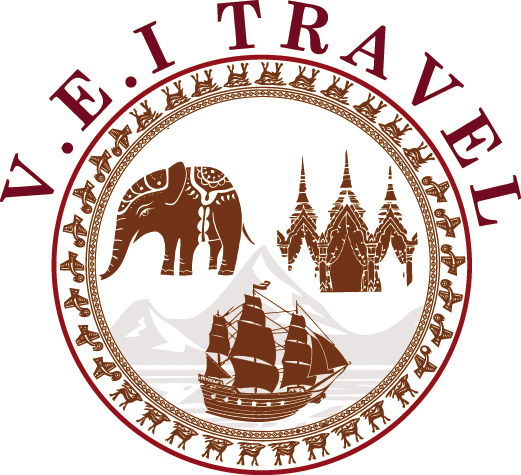11 October, 2018
Son La province has 18 ethnic groups living together despite their different customs and lifestyles. Traditional clothes are an important component of a culture, which identify ethnic groups and reflect their society, production, and history.

Throughout time, Thai women have retained their traditional clothes which include short vests, long black skirts, waistbands, headscarves, and silver ornaments.
Young Thai girls learn from their grandmothers and mothers, how to tighten their waists with cloth bands to keep their figures trim.
Thai women learn the craft of weaving and making their own clothes from the time they are small. They collage colourful clothes and embroider flowery images or patterns on indigo or black clothes.
Lo Thi Yen, a Thai woman in Moc Chau district said, “We’re proud of our traditional clothes and we wear them on festivals and celebrations. Thai women love to wear the Com vest and long dress. The Pieu headscarf is a highlight of our costumes.”
The clothing worn by Muong women is not as colourful as that of other groups. They are as plain and elegant as the characteristics of Muong people – quiet and honest. The two dominant colour tones are black and white.
The Muong women wear a white top tied to the body, inside a waist-long blouse opening in the front. The upper hem of the pants is embroidered, displaying the skill and creativity of the owner while still maintaining a level of sophistication.
On special occasions, the women wear more silver accessories such as chains, bracelets, and necklaces.
Muong women wear white headscarves as they believe that white represents purity, nobility, the sky, and heaven.
Bui Thi Thuy Duong, a Muong in Phu Yen district, said “The Muong clothes look plain in design and color, but it can show off the beauty of the wearer. I want to introduce our group’s costumes and culture to many more people.”
Of the 18 ethnic groups in Son La, the clothing of Mong women are the most colorful and eye-catching. Besides differences in clothes of each Mong branch, they typically feature V-neck blouses with embroidery on both sleeves.
On indigo fabric, they sew colorful patches and embroider images to make skirts as beautiful as flowers.
The Kho Mu’s clothes are strongly influenced by clothes of the Thai, which has a Pieu headscarf, a black vest, a waistband, and a long black dress. Embroidered images on their clothes commonly represent the sun, the moon, animals, birds, and flowers.
Pham Quoc Khanh, Vice Chairman of Son La provincial People’s Committee, talked about clothes, which are the signature of each ethnic groups.
“Traditional clothing of ethnic groups are a cultural legacy and a message from the past to the present. Preserving traditional clothes is an important mission. Clothes are an indispensable part of life and society,” he said.
Traditional clothes of each group are beautiful in their own way. Each pattern and image has a story, reflecting the view and aspiration of the makers.
The rich history and tradition of embroidery and weaving, has given the northwestern region and Son La province a wide breadth of cultural diversity.
VTV
 Francais
Francais  Vietnamese
Vietnamese